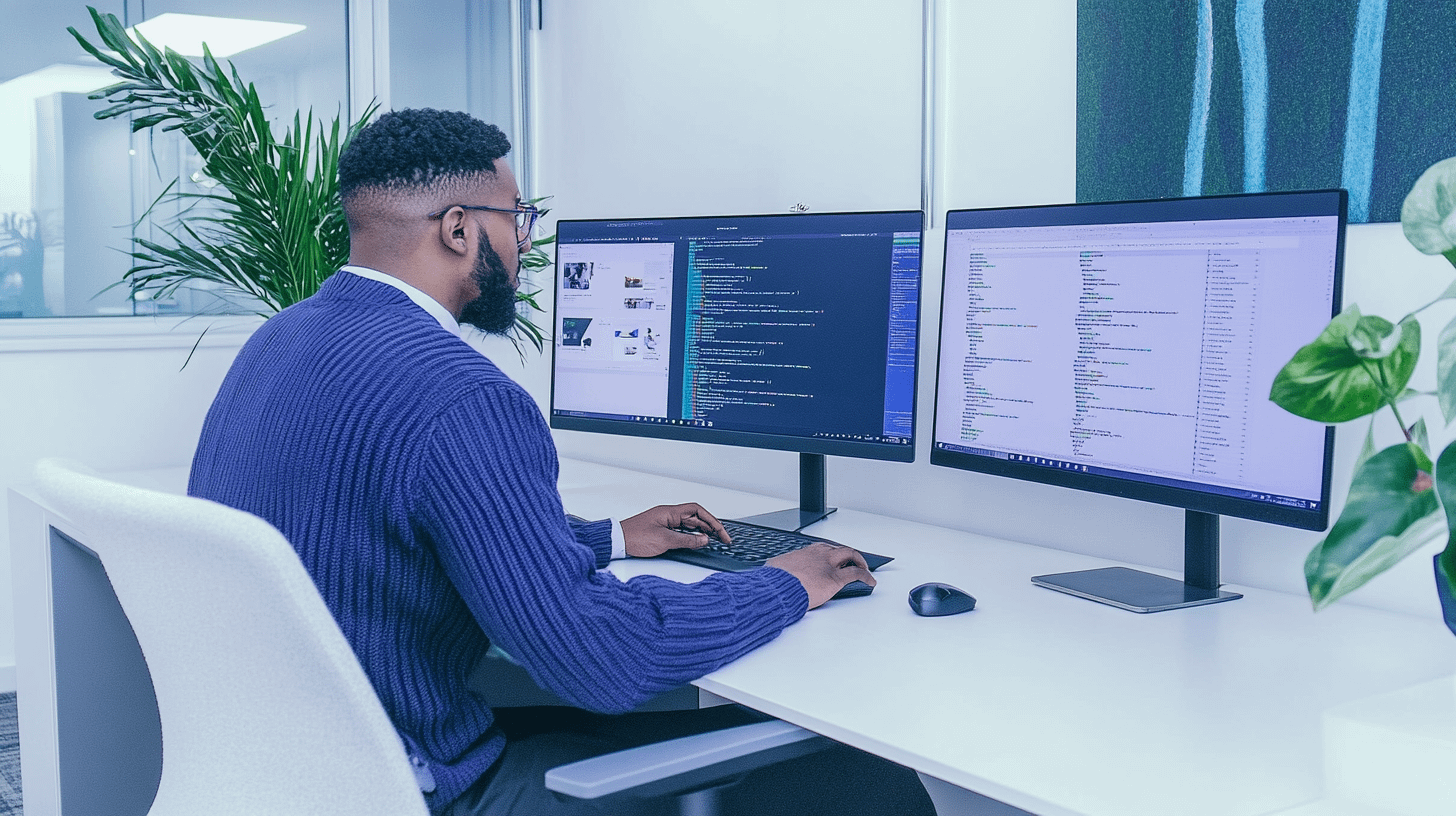Table of Contents
“Boost Bottom Line: Energize Your Business, Empower Your Day!”
Introduction
“Boost Bottom Line: Quick Energy Fixes for Busy SME Owners” is a practical guide designed to help small and medium-sized enterprise (SME) owners enhance their productivity and energy levels amidst the demands of running a business. This resource offers actionable strategies and quick fixes that can be easily integrated into a busy schedule, empowering entrepreneurs to optimize their performance, improve focus, and sustain high energy throughout the workday. By implementing these simple yet effective techniques, SME owners can not only boost their personal well-being but also drive their businesses toward greater success.
Energy-Efficient Lighting Solutions for SMEs
In the quest for improved profitability, small and medium-sized enterprises (SMEs) often overlook a critical aspect of their operational costs: energy consumption. Among the various strategies to enhance energy efficiency, lighting solutions stand out as both impactful and relatively easy to implement. By adopting energy-efficient lighting, SME owners can significantly reduce their energy bills while simultaneously contributing to a more sustainable environment.
To begin with, transitioning from traditional incandescent bulbs to LED lighting is one of the most effective changes an SME can make. LEDs consume up to 75% less energy than incandescent bulbs and have a lifespan that is 25 times longer. This longevity not only reduces the frequency of replacements but also minimizes maintenance costs, which can be particularly burdensome for busy SME owners. Furthermore, the initial investment in LED technology is often recouped within a short period due to the substantial savings on energy bills.
In addition to LEDs, it is essential to consider the layout and design of lighting within the workspace. Utilizing natural light can significantly enhance energy efficiency. By strategically placing workstations near windows or installing skylights, SMEs can reduce their reliance on artificial lighting during daylight hours. This approach not only lowers energy costs but also improves employee morale and productivity, as studies have shown that natural light can enhance focus and well-being.
Moreover, the implementation of smart lighting systems can further optimize energy use. These systems allow for automated control of lighting based on occupancy and daylight levels. For instance, motion sensors can turn lights off in unoccupied areas, while dimmers can adjust brightness according to the amount of natural light available. Such technology not only conserves energy but also provides a tailored lighting experience that can adapt to the specific needs of the workspace.
Another consideration for SME owners is the importance of regular maintenance of lighting systems. Dust and dirt accumulation on fixtures can significantly reduce their efficiency, leading to increased energy consumption. By establishing a routine maintenance schedule, businesses can ensure that their lighting systems operate at peak performance, thereby maximizing energy savings. This proactive approach not only extends the lifespan of the lighting fixtures but also enhances the overall aesthetic of the workspace.
Furthermore, it is worth noting that many utility companies offer incentives and rebates for businesses that invest in energy-efficient lighting solutions. These programs can help offset the initial costs associated with upgrading to more efficient systems, making it an even more attractive option for SMEs. By taking advantage of these incentives, business owners can further enhance their bottom line while contributing to broader energy conservation efforts.
In conclusion, energy-efficient lighting solutions present a valuable opportunity for SME owners to reduce operational costs and improve sustainability. By transitioning to LED technology, optimizing natural light usage, implementing smart lighting systems, and maintaining existing fixtures, businesses can achieve significant energy savings. Additionally, leveraging available incentives can further enhance the financial benefits of these upgrades. As the landscape of business continues to evolve, embracing energy efficiency not only positions SMEs for greater profitability but also aligns them with the growing demand for environmentally responsible practices. Ultimately, these quick energy fixes can lead to a more sustainable future for both the business and the community it serves.
The Impact of Breaks on Productivity and Energy Levels
![]()
In the fast-paced world of small and medium-sized enterprises (SMEs), the relentless pursuit of productivity often leads business owners to overlook a crucial element that can significantly influence their performance: the impact of breaks on productivity and energy levels. While it may seem counterintuitive to step away from work when deadlines loom, research consistently demonstrates that taking regular breaks can enhance focus, creativity, and overall efficiency. Understanding this relationship is essential for SME owners who are keen on boosting their bottom line.
To begin with, it is important to recognize that the human brain is not designed for prolonged periods of intense concentration. Studies have shown that after about 90 minutes of focused work, cognitive function begins to decline. This decline manifests as decreased attention, reduced problem-solving abilities, and a general sense of fatigue. Consequently, when SME owners and their teams push through without taking breaks, they may find themselves working harder but achieving less. By incorporating short, structured breaks into the workday, individuals can recharge their mental batteries, leading to improved focus and productivity upon returning to their tasks.
Moreover, breaks can serve as a catalyst for creativity. When employees step away from their desks, they often engage in different activities that stimulate their minds in new ways. This shift in focus can lead to the generation of fresh ideas and innovative solutions to problems that may have seemed insurmountable when viewed through a narrow lens of continuous work. For SME owners, fostering an environment that encourages regular breaks can thus not only enhance productivity but also drive innovation, which is vital for staying competitive in today’s market.
In addition to enhancing cognitive function and creativity, breaks also play a significant role in managing stress levels. The pressures of running a business can lead to heightened stress, which in turn can negatively impact both mental and physical health. By taking regular breaks, SME owners and their employees can mitigate stress, allowing for a more balanced approach to work. This balance is crucial, as chronic stress can lead to burnout, absenteeism, and high turnover rates, all of which can severely affect an organization’s bottom line. Therefore, promoting a culture that values breaks can contribute to a healthier, more engaged workforce.
Furthermore, the type of breaks taken can also influence their effectiveness. Engaging in physical activity, such as a short walk or stretching, can invigorate the body and mind, while mindfulness practices, such as meditation or deep breathing exercises, can help clear mental clutter. By encouraging employees to choose breaks that resonate with them personally, SME owners can create a more dynamic and responsive work environment. This personalization not only enhances the effectiveness of breaks but also fosters a sense of autonomy and trust within the team.
In conclusion, the impact of breaks on productivity and energy levels cannot be overstated. For busy SME owners, recognizing the value of regular breaks is a strategic move that can lead to enhanced focus, increased creativity, and improved employee well-being. By fostering a culture that prioritizes breaks, business leaders can create a more productive and innovative workforce, ultimately driving their bottom line upward. Embracing this approach not only benefits individual employees but also contributes to the long-term success and sustainability of the organization as a whole.
Simple Office Layout Changes to Enhance Energy Flow
In the pursuit of enhancing energy efficiency and productivity within small and medium-sized enterprises (SMEs), simple office layout changes can yield significant benefits. The arrangement of an office space plays a crucial role in determining not only the flow of energy but also the overall morale and efficiency of employees. By making thoughtful adjustments to the office layout, SME owners can create an environment that fosters collaboration, creativity, and well-being, ultimately contributing to a healthier bottom line.
To begin with, the positioning of furniture and workstations can greatly influence the energy flow within an office. An open layout, characterized by fewer barriers and more communal spaces, encourages interaction among employees. This design not only facilitates communication but also promotes a sense of community, which can lead to increased motivation and productivity. Conversely, a cluttered or overly compartmentalized office can stifle creativity and hinder collaboration. Therefore, SME owners should consider adopting an open-plan design or incorporating flexible workspaces that allow for easy movement and interaction.
Moreover, the strategic placement of natural light sources can significantly enhance the energy flow in an office. Research has shown that exposure to natural light improves mood and increases productivity. Therefore, it is advisable to position workstations near windows or in areas where natural light can be maximized. Additionally, using light-colored walls and reflective surfaces can help distribute light more evenly throughout the space, creating a brighter and more inviting atmosphere. By prioritizing natural light, SME owners can not only reduce reliance on artificial lighting but also create a more energizing work environment.
In addition to light, the incorporation of greenery into the office layout can have a profound impact on energy flow. Plants are known to improve air quality and reduce stress levels, making them an excellent addition to any workspace. By strategically placing plants throughout the office, SME owners can create a more vibrant and refreshing environment. Furthermore, biophilic design principles, which emphasize the connection between nature and the built environment, can be integrated into the office layout. This approach not only enhances aesthetic appeal but also promotes well-being and productivity among employees.
Another important aspect to consider is the arrangement of communal areas. Break rooms, lounges, and collaborative spaces should be easily accessible and designed to encourage social interaction. By creating inviting spaces for employees to gather, SME owners can foster a culture of collaboration and innovation. These areas can serve as informal meeting spots, allowing for spontaneous brainstorming sessions and idea exchanges that can lead to increased creativity and problem-solving.
Finally, it is essential to ensure that the office layout accommodates the diverse needs of employees. This includes providing a variety of workspaces, such as quiet zones for focused tasks and collaborative areas for team projects. By offering flexibility in the workspace, SME owners can cater to different working styles and preferences, ultimately enhancing employee satisfaction and productivity.
In conclusion, simple office layout changes can significantly enhance energy flow within SMEs. By adopting an open design, maximizing natural light, incorporating greenery, creating inviting communal areas, and accommodating diverse work styles, SME owners can cultivate a more productive and energizing work environment. These adjustments not only contribute to employee well-being but also positively impact the overall performance and profitability of the business. As such, investing time and resources into optimizing office layout is a strategic move that can yield substantial returns for busy SME owners.
Conclusion
Boost Bottom Line: Quick Energy Fixes for Busy SME Owners emphasizes the importance of implementing simple, effective strategies to enhance productivity and energy levels among small and medium enterprise owners. By prioritizing time management, optimizing work environments, and incorporating short breaks, SME owners can significantly improve their focus and efficiency. Ultimately, these quick energy fixes not only lead to better personal well-being but also contribute to the overall success and profitability of their businesses.








